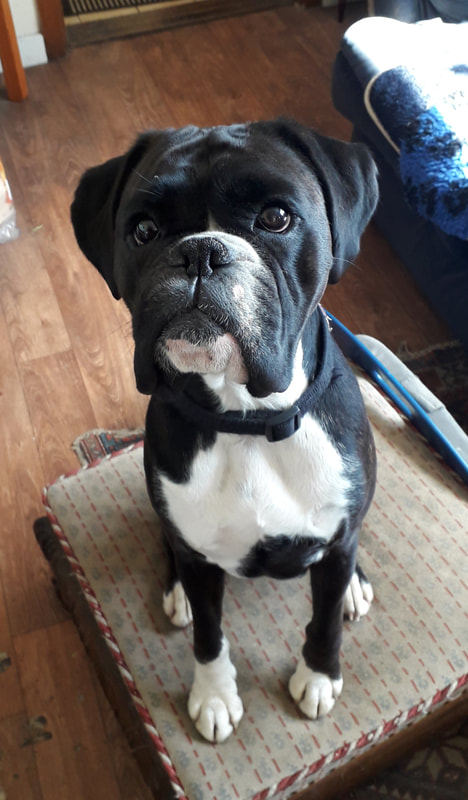How do we recognise the difference between these people? We look at the signals they give us as they approach. (It may be that with social distancing we lose our spontaneity in this respect. But, for now, I’m talking about what we did before Covid-19.)
Some acquaintances greet us with outstretched arms. The signal they are giving is friendly, spontaneous, loving, and we readily return the embrace. Other friends or acquaintances walk forward with a smile, or at the most the offer of a handshake. And we read their signals clearly. Some time ago, my son had a lovely girlfriend, whose family believed in greeting one and all, including strangers, with an engulfing embrace. I found this an invasion of my personal space and they ignored my signals but I had to endure it for the sake of my son. However, it was most annoying.
The same principle applies to our dogs. There are some dogs that are quite touchy, feely. But you never see dogs with their paws draped around each other. And there are some breeds that have huge personal spaces. The trouble is we don’t bother to read the clear signals a dog gives us as we approach. After all, we would hardly rush up to strangers and throw our arms around them. Yet, we run up to small dogs, puppies, handsome looking canines and proceed to stand over them, billing and cooing, trying to stroke them, and patting their heads. And lots of us ignore the warnings of the owner that the dog is unused to petting, under-socialised or is just plain aloof or fearful.
Some dogs suffer in silence, cringing as the person in question invades their space despite their signals. But the first clear signal in all dogs is to look away – a sure sign that they find the oncomer’s greeting inappropriate. Every dog understands that signal. Why can’t we? But the person keeps coming forward, staring at the dog with hands outstretched. If the dog is a rescue and under-socialised, merely of a nervous disposition, hates being touched by a stranger or dislikes people standing over him in a seemingly threatening manner, then this is big trouble.
First of all, staring is impolite for a dog. So is the direct approach. And, if the dog is nervous and the owner isn’t taking action to avoid this situation, the dog becomes stressed and feels he must protect himself if his owner fails him. A stressed dog reacts to anything that frightens or causes alarms. He might cringe, give a low growl, or even a dry snap, or worse still, connect with his teeth. Those are his signals. As far as he’s concerned, he’s showing his discomfort, yet you keep ignoring him, so his warnings get more and more serious! Get the picture?
You could argue that the owner shouldn’t bring his dog into public until he is socialised. But he won’t be socialised until he visits public places. What I feel is wrong is the approaching person who believes the dog will benefit from his attention! Never mind the signals that the dog is giving or the possible request of the owner for him to back off.
At this time, it’s so important to respect the owner’s wishes, and more importantly, respect the signals from the dog. Obviously, the dog needs training but he will only get it by being gently exposed to all sorts of different situations.
In my dog obedience classes, I ask people to walk their dogs very slowly towards another person and dog. I’m teaching them to recognise their own and other dog’s signals. Obviously, if an owner’s dog begins to get anxious about moving forward, then it’s time to stop and allow him to process things. Or it may be even better to move one or two steps backward until the dog sits down or stands quietly thus, indicating that he can cope at the bigger distance. If, as handlers, we’re quiet in this situation, our dogs can read our signals and relax as well. But, more importantly, we’re respecting and reading the clear signals we’re getting and not forcing or overwhelming our dogs by making them approach another animal when that troubles them.
If we just walk our dogs into an awkward situation with another dog, it could leave a deep and lasting impression on dogs’ psyche making them reactive or fearful of other dogs.
When you next look at your dog, try to read his signals. You can tell when he’s looking forward to a walk by his increased energy and tail wags. But how about looking at him when he’s approaching something new? Look at his overall demeanour. Is he making himself smaller in size? If so, he’s telling you he’s unsure of this, and rather fearful, so he’s saying he’s no threat. When he barks as he approaches other dogs, you have to understand the bark. Is it accompanied by his hackles raised, a hard eye, ears back and straining excessively on the leash? If so, he’s being confrontational. But, if that bark sounds aggressive but the dog is acting fearfully, he’s giving a warning not to come any closer because he really doesn’t want to have to do anything. It may still sound aggressive but his body language is telling another story.
Reading dogs’ signals is a fascinating occupation and one that I find very absorbing. But, then that’s probably one of the reasons why I became a dog trainer!


 RSS Feed
RSS Feed
